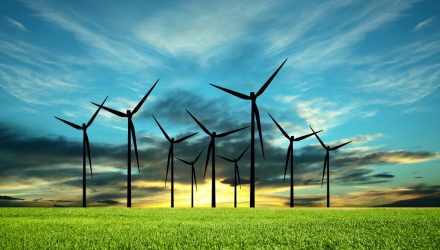Clean technologies and renewable energy concepts may appear new and tech-laden, but it takes some old school materials and metals to drive the green energy revolution.
Also known as green metals, these materials are integral ingredients in everything from solar panels to wind turbines and much more. They’re also an investable asset class thanks to exchange traded funds such as the VanEck Green Metals ETF (GMET).
GMET, the original ETF focusing on green metals investing, follows the MVIS Global Clean-Tech Metals Index. The fund’s 49 member firms include companies engaged in the production, recycling, and refining of green metals.
GMET’s underlying index “is intended to track the performance of companies involved in the production, refining, processing and recycling of green metals. Green metals are metals used in the applications, products and processes that enable the energy transition from fossil fuels to cleaner energy sources and technologies,” notes Brandon Rakszawski, VanEck senior product manager.
GMET, which came to market last November, provides exposure to 36 green metals. That group includes familiar fare such as cobalt, copper, and lithium as well as a slew of metals that investors may not be familiar with, including osmium, thulium, and zircon.
By weight, copper and lithium loom large, combining for 43% of GMET’s weight by metal, according to issuer data. Palladium/platinum and rare earth metals combine for another 12%. Among individual components, copper mining giant Freeport-McMoRan (NYSE:FCX) and lithium behemoth Albemarle (NYSE:ALB) combine for almost 14% of GMET’s roster.
Fourteen countries are represented in GMET, but underscoring China’s dominance in the global green metals and rare earths markets, stocks from the world’s second-largest economy account for 27.52% of the fund’s geographic exposure. That’s well ahead of the 16% that the VanEck ETF allocates to domestic equities.
As Rakszawski point out, geography is relevant in the green metals investing equation. Recent geopolitical woes confirm the necessity of developed markets bolstering supplies of these crucial metals and reducing dependence on potentially unfriendly regimes.
“The conflict in Ukraine has added a level of urgency to the energy transition and also raises other national security concerns, all of which can be tied back to these metals. Many rare earth elements for example are used in radar technology, jet engines, and missile defense systems, and many governments have signaled increases to defense spending,” adds Rakszawski.
For more news, information, and strategy, visit the Beyond Basic Beta Channel.
The opinions and forecasts expressed herein are solely those of Tom Lydon, and may not actually come to pass. Information on this site should not be used or construed as an offer to sell, a solicitation of an offer to buy, or a recommendation for any product.







